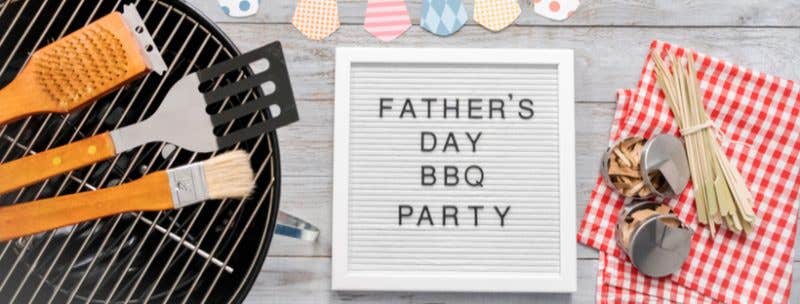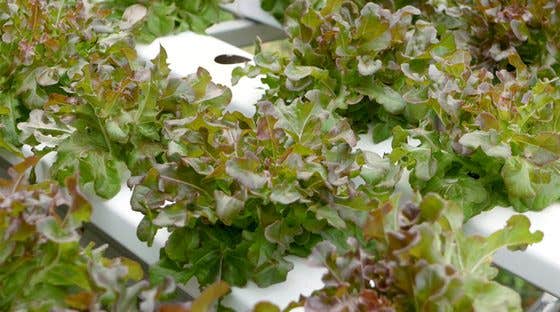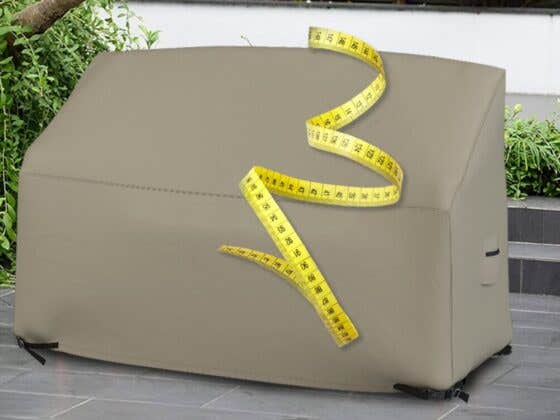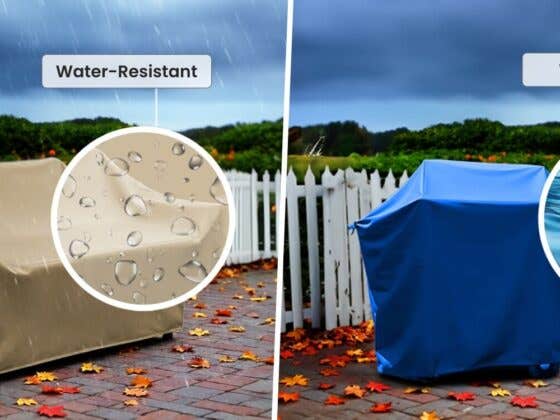Father’s Day is right around the corner and with that comes the possibility of
grilling in celebration of the special day. Once the grill cover is off you’ll be ready to throw down
with a meal worthy of a king. Hot dogs, hamburgers, and steaks are definitely on the menu. But what about
succulent greens? And what if they were readily available in your own backyard? Grilling vegetables is a great
way to get creative in the kitchen, allowing you to incorporate more health conscious options for dad and the
rest of the family without sacrificing a morsel of rich, rugged flavor. These steps to achieve gardening
supremacy will help you turn your vegetables from blase to bursting with flavor. And if you’re wondering how to
set the scene for your backyard feast, these 5
Types of Outdoor Furniture will inspire your inner creative designer.
Where to Begin

Summer barbeque season features a staple of crowd pleasing vegetable dishes because
there’s always a seat at the table for vegetables. So, take off the chair covers, and make
room for your own homegrown greatness. Onions, zucchini, corn, tomato, and eggplant all have the advantage of
tasting even better when properly grilled. What about the growing process, you ask? You would be surprised to
learn that these vegetables are some of the best and easiest to grow in backyard gardens.
- Onion has the coolest soil temperature requirement of all grilling vegetables.
Once soil temperatures reach just slightly above 50° Fahrenheit, seeds can be planted. Most onions have
growth that is heavily tied to the amount of sunlight they recieve. Be sure to choose seeds that are
conducive to the amount of sunlight your area receives. Onions only require a moderate amount of fertilizer,
preferring light, sandy soil. - Zucchini can be planted when soil temperatures reach a happy medium between 65°
to 85° Fahrenheit. This makes them ideal for those who always find themselves behind schedule or those who
don’t realize they want grilled vegetables to pair with steaks and burgers until summer is in high
gear. - Corn requires a soil temperature between 65° and 85° Fahrenheit. Successful corn
is grown when seeds are planted at the higher end of soil temperatures with plenty of
fertilizer. - Tomatoes, technically a fruit, require a copious amount of fertilizer and grow
best in well-drained, raised beds with black mulch. - Eggplant requires temperatures up to 75° but no more than 90° Fahrenheit. These
vegetables do best in well-drained beds with black mulch, requiring a high amount of fertilizer.
Summer Bounty
When it comes to harvesting grilling vegetables, it’s important to remember just how
blessed your bounty is. Growing is a great way to provide your family with fresh, homegrown food to enjoy both
on Father’s Day and for the rest of the summer. But with that comes the difficult responsibility of knowing when
crops are ready for harvest. Harvesting at the most opportune time can have a big impact on the quality of your
crop’s yield.
- Bigger doesn’t always mean better. Many vegetables are at their peak and
tenderness when still immature. Use your best judgement in adequately assessing your yield’s harvest. - Avoid summer rain. The best gardeners know how important it is for vegetables to
receive regular water. However, it’s always a good idea to stay out of the garden when it’s raining. - Stay on top of harvesting. Frequent harvesting results in a higher quality and
better tasting yield. - Use proper tools. Many vegetables like beans, peas, lettuce, and kale don’t
require specific harvesting tools. However, for vegetables like zucchini and large-fruited tomatoes, a sharp
knife, pruning shears, or gardening fork help prevent damage to the plant or the part being
harvested. - Once harvested, place your vegetables in a basket, trug, or handy garden pan to
prevent damage. This allows for seamless transition and easy washing.
Barbeque Season

Your fresh summer produce will taste even better when it meets the grill. Whether you
need a quick remix on how to readily prep and grill a specific vegetable or you just want to grill a bunch of
veggies all at once, let this be your magic cook book on the journey that comes with bringing a backyard farm to
your kitchen table. So, pull off the table covers and serve up
something truly special to make Dad’s day.
- The more surface area you give your vegetables for grilling, the more flavor
you’re going to get. This is the golden rule of grilling veggies. It also makes them easier to move around
once you get the grill cooking. - Prevent sticking by brushing the vegetables with oil after slicing. Make sure to
clean your grill before placing the vegetables on the heat. There’s no real need to get fancy here, everyday
olive oil is ideal for both flavor and color. - Average cook time depends largely on the size and shape of each vegetable. Keep
in mind that most grills have hot spots that can be used to your advantage. - Serve your finished vegetables with a sprinkle of sea salt, a drizzle of olive
oil, and a small squeeze of lemon right after they come off the grill.

















Recent Comments